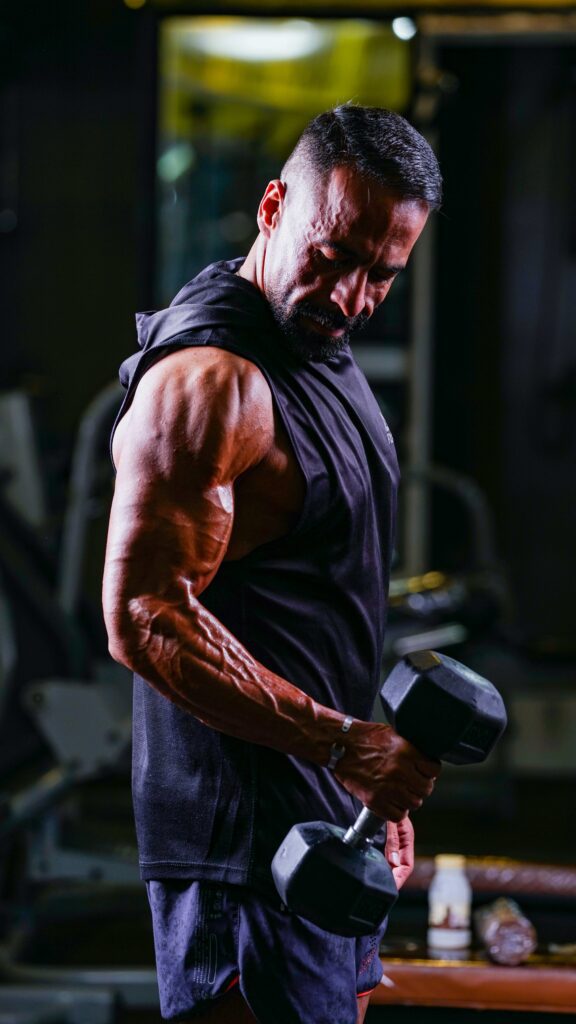The more you keep yourself engaged in physical activity, the chances are that you would be able to grab the day by its foot, swirl it and make the most of it. Running is the most effective way of keeping yourself energised and clearing out the morning swoon from your mind.
However, what good is prepping to run a marathon (or just a jog around the block) if you don’t prioristise recovery.
While some of us will debate the relevance of post-run stretches, there are a bunch of reasons as to why you should be giving them the time of day. Here’s a few.
The Aptness of Post-Run Stretches: How much of a Big Deal is it?
While most of us would want to sit back, relax and have a nice cold post-workout smoothie after a long run, according to a number of physiotherapists, taking the time to indulge in stretches after running will do more good than harm.
Stretching helps to reduce muscle tension after a run, improving blood flow and aiding the parasympathetic nervous system (the rest and digest system) in its recovery after the stress caused by a run. Stretching also improves a coordination (we’ve all hopped about trying to stretch a quad) and helps prevent injuries by giving you the opportunity to spot early indications of a niggle. It can also decrease postrun soreness.
For example, when doing a typical treadmill run, you should be devoting at least 6-7 minutes stretching to come into form.
Allow us to break it down:
Sustenance of good Post Running Stretches
Eliminating the Muscle Soreness & Risk of Injury
When you are actively involved in running, you are rigorously pushing your body to wake up from the trance of an entire night’s sleep and your previous frensied day by putting the muscles to work and warming them up. This leads to the creation of friction between the muscles, which could lead to injury or muscle soreness.
“The improved motion due to stretching decreases the risk of muscle strains and overuse injuries such as tendonitis. It enhances your stride length, speed, and overall running efficiency! Stretching also helps prevent soreness and cramping after running,” Matthew Dobbler, a physician’s Assistant and former Athletic trainer, says about stretching after running.
Helps to bring back the body into normal pace
Assume that you have been for running for 30 minutes, and when you return home or take a minute to stop, your body is pretty warmed up from all that consistent pressure.
Now, rather than just staying put for a while, what works better is a few minutes of stretching, which regulates steady breathing in your body and makes you feel relaxed from all that running. If you do not want to feel sluggish and tired during the day, running stretches will work for you.
Energise for the Day Ahead
After you are done with your running session and stretches, consider a nice cold shower.
Cold water has long been used as treatment for sore muscles by sports therapists and athletes. Other physical benefits of frigid H2O are said to include increased weight loss and improved skin, but there is also evidence that cold showers can help with your mental health, too.
5 Post-Running Stretches to get your body Going
While stretching your hips, calves, thighs, and back is a great full-body routine, choosing which stretches works best for you could require a chat with your physician. Try to be vigilant if you ever have had a knee injury or some joint problems.
These stretches are a smart tactic for anyone who has their fitness goals set – all you need to do it match them with your best running gear, and you’re good to go..
Here are five to try out.
Gastrocnemius Calves Stretch
The most common running stretches involve stretching your calves muscles more because they are mainly engaged while running miles. There is much muscle soreness at the back of the lower leg, and it is necessary to release the stiffness of the tendons and make them relaxed by stretching. Here is how you can perform Gastrocnemius Calves Stretch.
Steps:-
1. Put your Right foot forward, and bend your knees (only above the ankles). Do not try touching them to the surface.
2. Extend your left leg backward and stretch it. It would form a diagonal shape from your head to the left leg.
3. Keep your back leg stretched as much as you can by bending a little more towards the front. Remember to stretch it appropriately. It puts mild pressure on the calves. The stress should not be significantly less or very extreme. Keep it at a moderate level.
4. Repeat the whole process with the right leg.
Soleus Calves Stretch
Soleus Muscles are also part of the calves and are actively involved while going for a run. So you need to actively engage in a stretching exercise that helps relieve the Soleus in your Calves, and here is how you can do it.
Steps:-
1. Like Gastrocnemius stretching, extend your right foot slightly forward and bend both your knees (left & right) equally.
2.While bending your knees, keep the weight of your body evenly balanced on both legs’ knees.
3. Keep both the leg’s feet flat on the surface and stretch it slowly. Be mindful that you feel the stretch only above the ankle and appropriately.
The Knee Hug Stretches
It is one of those stretching exercises people also do if they try to reduce their bloated tummy or just the usual belly flat. It is one excellent way to put pressure on your lower back, the spinal and your tummy.
Infact as Medical News Today mentions the statistics reported by the National Institute of Neurological Disorders and Stroke that about 80% of adults experience lower back pain in their life. The figure has become even more relevant in an era when working from home is key to our survival in professional life.
However, the post-running experience could be similar to back pain if you do not perform running stretches. Here is how you can perform this exercise.
Steps:-
1. Lie down on your back on a yoga mat, and stretch both your legs forward.
2. Now bend the knees in the upwards direction, and slowly bring it closer up to your chest.
3. You need to hold/grasp the forelegs from both sides and try to bring your chin near to it. Try lifting your head a bit and bringing your face closer to the knees.
4. Hold the position for 30 seconds minimum, and release back to normal positioning.
Hip Flexor Stretches
The site where thighs and torso muscles are connecting with each other refers to Hip Flexor. You might feel your Hip flexor quite tight post running session, and it could be the sole reason behind back pain.
It could get quite uncomfortable for you to spend the rest of the day if you do not release the stress of the Hip Flexor. If you want to go for a run the next day, here is what you need to do for Hip Flexor Stretches.
Steps:-
1. Take your right foot behind and drop down on its knee. Keep the left leg in front but bent with feet flat on the surface.
2. Bent a little forward towards the left leg and keep your right torso and hip straightened and stretched.
3. Hold it for a few seconds, and then bring back the right leg inwards. Now repeat the entire steps with the left leg involved.
Quad Stretch of Front Thighs
It is also known as Quadriceps Stretch because of the four muscles in the front part of the thighs that are involved while running. So to stretch them, you need to perform these post- running stretches.
Steps:-
1. Turn backward and lie on your stomach, taking support of your right hand for the forehead.
2. Take your right foot and hold it by the ankle with the right hand.
3. Bend your right leg and bring both your side pelvis muscles in contact with the surface.
4. Slowly take your right foot by your buttocks in a bending position.
5. Come back at ease after a few seconds and repeat the process with the left leg.
Wrapping Up
Every workout routine must have an appropriate beginning and a definite end. So when you choose to begin your day with the run commute to your workplace or just a regular run a few miles, make sure you practice the above stretches post your run time. It is not about beginners or experienced, but it is about keeping your mobility agile.
















